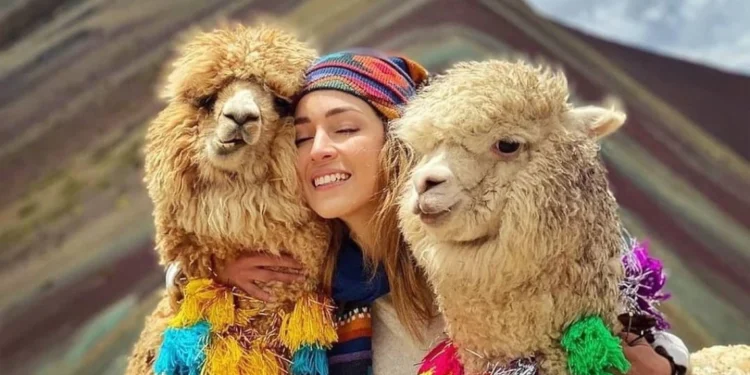Imagine standing atop the Andes, surrounded by breathtaking landscapes of mountains and valleys. The air is crisp, and the earth glows golden under the sunlight. Suddenly, you come face to face with a majestic animal, serene in its gaze and steady in its step: the alpaca. This is just one of the many camelids that inhabit Peru’s highlands, bearing witness to ancestral stories and continuing to play an essential role in the country’s life.
In this article, you’ll uncover everything you need to know about these fascinating animals: their history, cultural and economic importance, and how they remain a cornerstone of Andean communities. At the end of the article, we invite you to join our community to continue learning more. Are you ready for this journey?
“Camelids have not only been companions to Andean communities but are the key to their resilience and adaptation in extreme environments.”
The Four Andean Camelids: A Journey Through History and Culture
Andean camelids are native to South America and are renowned for their ability to thrive in the harsh mountainous environment. Over the centuries, they have been vital to Andean cultures, not only as sources of food and materials but also as pack animals and spiritual symbols. Did you know there are four main species? Let’s meet them:
1. The Alpaca: The Queen of the Andes
Did you know alpaca fiber is one of the softest and finest in the world? It’s so valued that it’s considered a luxury material. For centuries, Andean peoples have used this fiber to weave ponchos, blankets, and fine garments to stay warm in the cold altitudes.
“The alpaca is more than just an animal; it is a lifeline. Its fiber, its wool, is a treasure that has woven the stories of generations.”
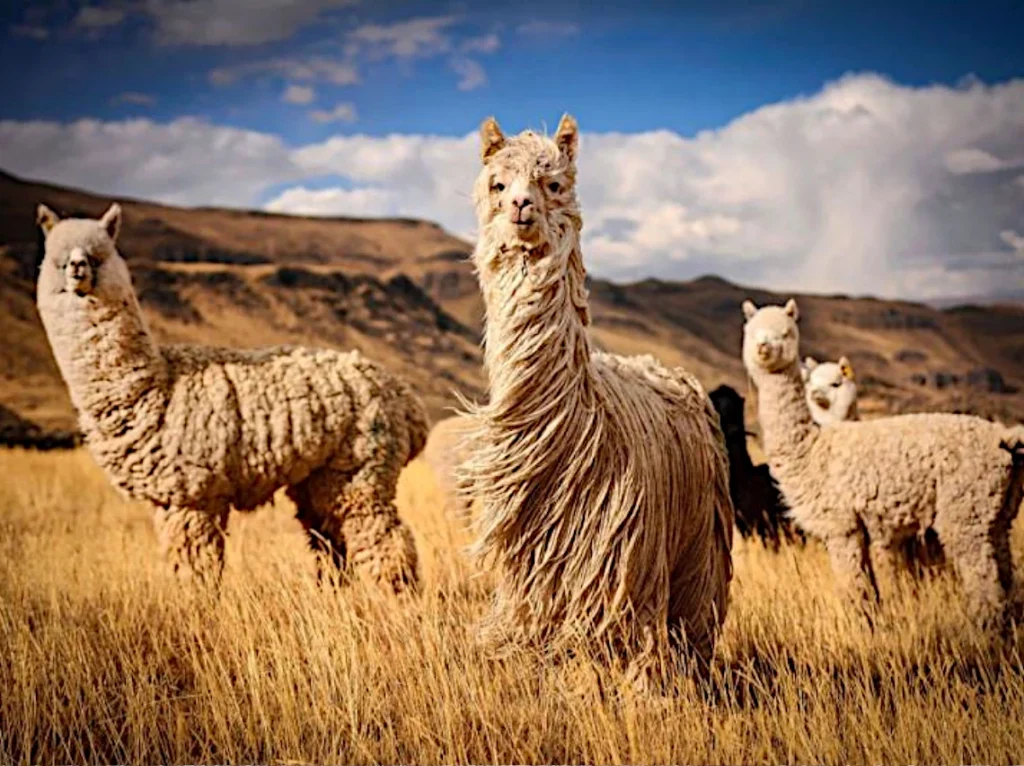
What’s remarkable about alpacas is that, despite being domesticated, they retain many traits of their wild ancestors. Their bodies are perfectly suited for high altitudes, and their fleece provides excellent insulation against the cold. But it’s not just their wool that makes them special—alpacas’ calm and friendly demeanor makes them a cherished economic and social asset in Andean communities.
2. The Llama: The Quintessential Andean Camelid
If you’ve ever traveled through Peru’s mountains, you’ve likely seen llamas walking along steep paths, carrying supplies from one place to another. Llamas have been the primary means of transportation in the Andes for thousands of years. With their endurance and ability to carry heavy loads, llamas are indispensable in rural communities where traversing challenging terrains is a daily reality.
“Llamas don’t just carry goods; they carry stories of survival and resilience. They are the soul of the Andes.”
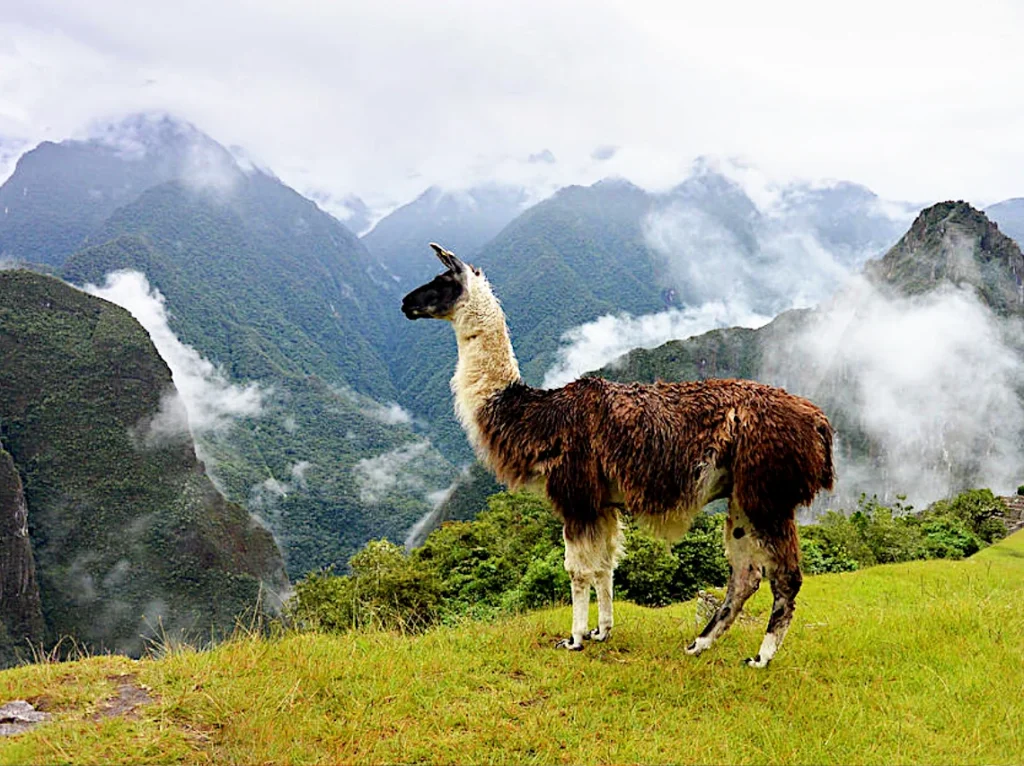
What’s fascinating about llamas is their adaptability to extreme climatic changes. From the scorching heat of sunny days to freezing nights at high altitudes, llamas have evolved to survive in environments many would consider inhospitable.
3. The Vicuña: The Treasure of the Andes
Of all the camelids, the vicuña is undoubtedly the most elegant. Its soft, golden, and incredibly fine fleece has been prized by Andean civilizations for thousands of years. It’s said that only Inca emperors could wear vicuña garments, as their wool is so scarce that it can only be obtained once a year during shearing.
“The vicuña is a symbol of purity and beauty—a treasure the Andes have gifted us, but also a reminder of the importance of preserving what is most valuable.”
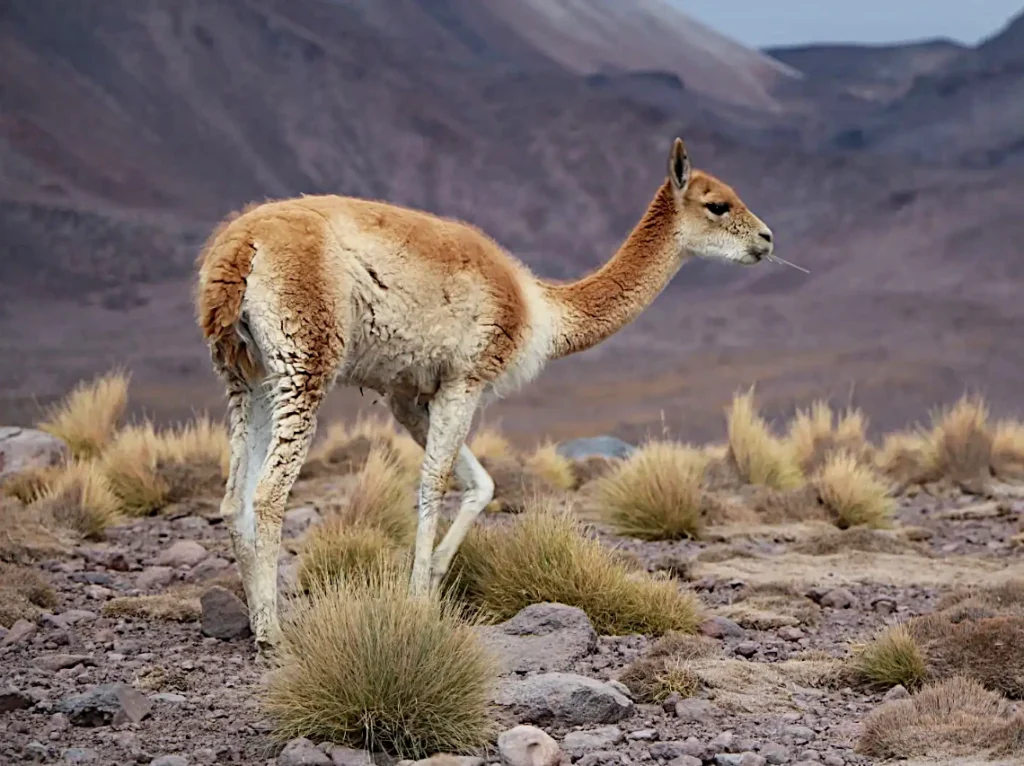
Today, the vicuña is protected due to its low numbers. Fortunately, conservation efforts have allowed their population to grow, and the wool obtained now is a valuable and sustainable resource, respecting the animal’s welfare.
4. The Guanaco: The Wild Ancestor
The guanaco is the wild ancestor of the llama, and while less known, it plays a vital role in maintaining the Andean ecosystem’s balance. It inhabits the driest areas of South America, and its resilience is remarkable. Unlike llamas and alpacas, the guanaco is a wild animal, yet it shares many characteristics with its domesticated descendants. The guanaco’s ability to adapt to its environment has been critical to the conservation of domestic species in the region.
“The guanaco is a testament to nature’s wisdom—how life can thrive even in the harshest landscapes.”
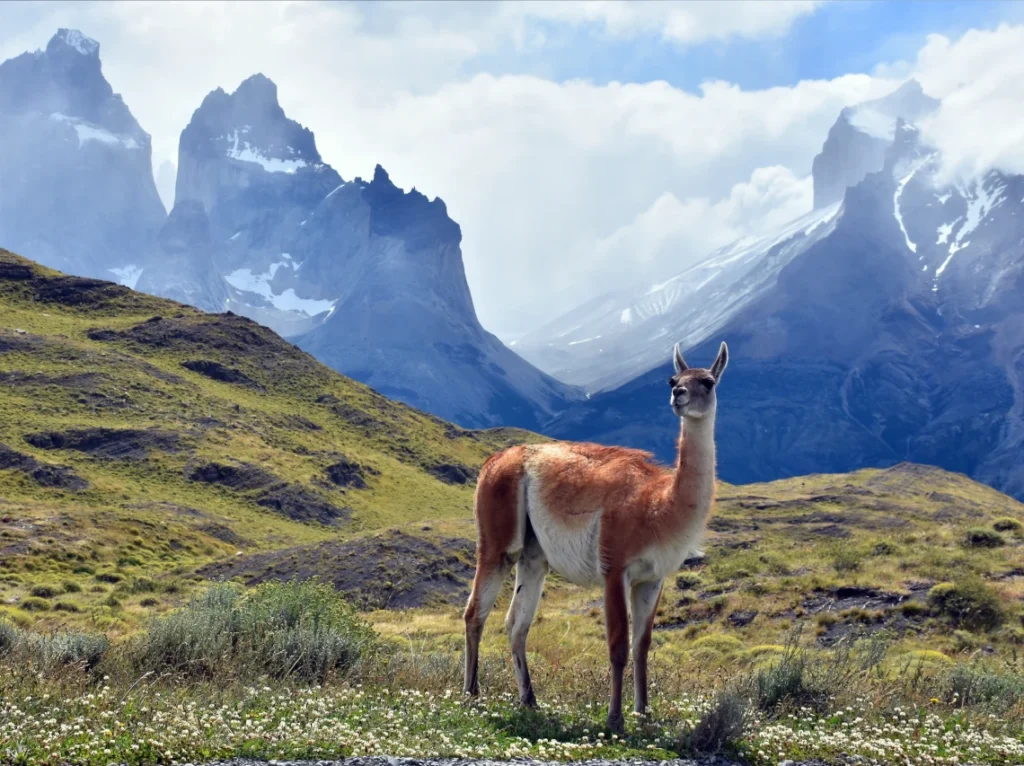
The Profound Bond Between Camelids and Andean Communities
Camelids are not just animals—they are life companions. For centuries, Andean communities have relied on them to survive in one of the world’s harshest environments. Alpaca fiber, llama meat, the transportation provided by llamas, and the beauty of vicuñas are just a few ways these animals have enriched the lives of the people in the Andes.
“Camelids are the silent heroes of the mountains. Their presence has been crucial to the daily life of Andean peoples.”
But beyond their practical uses, camelids hold a special place in the hearts of the Andean people. They are considered sacred, symbols of the connection to Pachamama, or Mother Earth. In many communities, camelids are part of rituals to give thanks and protect the land.
Andean camelids are more than just animals—they are symbols of resilience, connection, and sustainability. Through them, Andean communities have thrived in the world’s highest mountains, and today, they remain vital to their daily lives. But beyond their utility, camelids remind us how deeply intertwined nature and culture can be.
What do you think about Andean camelids and their connection to life in the Andes? Have you had any experiences with them, or would you like to learn more about their history? Share this article with your friends and leave your comments. We’d love to hear your opinion and keep sharing more about this fascinating culture!


